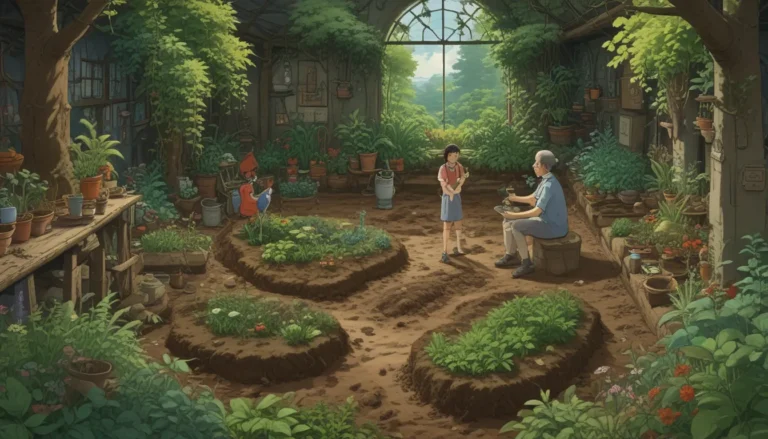Mustard Greens: A Comprehensive Guide to Growing and Caring for Brassica

Mustard greens hold a special place among garden vegetables – they are tasty, versatile, and quick to grow. With dozens of varieties to choose from, it can be overwhelming to select the right one for your garden. In this article, we will explore everything you need to know to successfully grow and care for mustard greens.
What Are Mustard Greens?
Mustard greens are part of the Brassicaceae family, which includes a wide range of vegetables. From large leaf varieties like ‘Garnet Giant’ to tender Asian greens like mizuna and tatsoi, there is a mustard green for every palate. These greens are prized for their unique flavors, fast growth, and versatility in the kitchen.
Cultivation and History
Mustard greens have a rich history that spans thousands of years. Originating in the Himalayan region of India, these greens have been enjoyed in cuisines around the world. From Chinese stir-fries to Southern braised dishes, mustard greens have long been a staple in culinary traditions.
How to Sow
When it comes to planting mustard greens, direct sowing is the way to go. Plant the seeds up to six weeks before the last frost date in your area, and continue planting in 30-day intervals. Mustard greens prefer well-draining, organically rich soil and require moderate watering to thrive. While they grow quickly, it’s important to provide adequate spacing between plants for optimal growth.
How to Grow
Mustard greens thrive in full sun locations, with some varieties able to tolerate partial shade. These greens require consistent watering, about 1-2 inches per week, to ensure they stay tender and flavorful. Additionally, regular feeding with balanced fertilizer and weed control are essential for healthy growth. Proper crop rotation is also important to prevent disease and pest issues.
Growing Tips
- Plant in organically-rich, well-draining soil in a full sun location.
- Provide one to two inches of water per week, including rain.
- Remove any bolting plants immediately to prevent bitterness.
Cultivars to Select
From spicy Asian greens like mizuna to mild Southern varieties like ‘Red Garnet,’ there are numerous cultivars of mustard greens to choose from. Some popular varieties include ‘Old Fashioned,’ ‘Ruby Streaks,’ and ‘Southern Giant Curled.’ Each cultivar offers a unique flavor profile and growth characteristics, making it easy to find your favorite.
Managing Pests and Disease
Pests like aphids, flea beetles, slugs, and whiteflies can pose a threat to mustard greens. Regular monitoring and prompt action can help control these pests and prevent damage to your plants. Additionally, diseases like damping off, white spot, and bacterial leaf spot can affect mustard greens. Proper hygiene practices, crop rotation, and high-quality seeds can help reduce the risk of disease.
Harvesting
Harvesting mustard greens is straightforward, with the ability to pick baby leaves for salads or full-size leaves for cooking. The “cut and come again” method allows for continuous harvest throughout the growing season. Mustard greens can be stored in the refrigerator for up to a week, ensuring they stay fresh and flavorful.
Preserving
Freezing or dehydrating mustard greens is a great way to preserve them for later use. Blanching the leaves before freezing helps retain their color and flavor. Dehydrated mustard greens can be stored in airtight containers for extended shelf life.
Recipes and Cooking Ideas
Mustard greens can be used in a variety of dishes, from salads to stir-fries to soups. A simple sauteed dish with ham hocks or bacon is a classic Southern preparation that highlights the flavor of these greens. For a vegetarian option, try Easy Italian-Style Beans and Greens Soup with mustard greens substituted for escarole. Mustard green chips are a tasty and healthy snack that can be made from large-leaf varieties like ‘Old Fashioned’ or ‘Red Garnet.’
Quick Reference Growing Guide
- Plant Type: Annual leafy green vegetable
- Water Needs: Moderate
- Native to: Asia
- Maintenance: Low
- Hardiness (USDA Zone): 6-11
- Tolerance: Light frost
- Season: Spring, fall
- Soil Type: Loamy, organically-rich
- Exposure: Full sun, part shade
- Soil pH: 6.0-6.8
- Time to Maturity: 35-70 days
- Soil Drainage: Well-draining
- Spacing: 8-24 inches, depending on variety
- Companion Planting: Celery, garlic, onions, mint, rosemary, sage, thyme, yarrow
- Avoid Planting With: Beans (esp. pole beans), peppers, potatoes, strawberries, tomatoes, and other Brassicas
Relish Growing Your Own Spicy Greens
Growing mustard greens is a rewarding experience that offers a wide range of culinary possibilities. With proper care and attention, you can enjoy a bountiful harvest of these flavorful greens throughout the growing season. Experiment with different cultivars, cooking techniques, and preservation methods to discover the full potential of mustard greens in your kitchen. Happy gardening!





